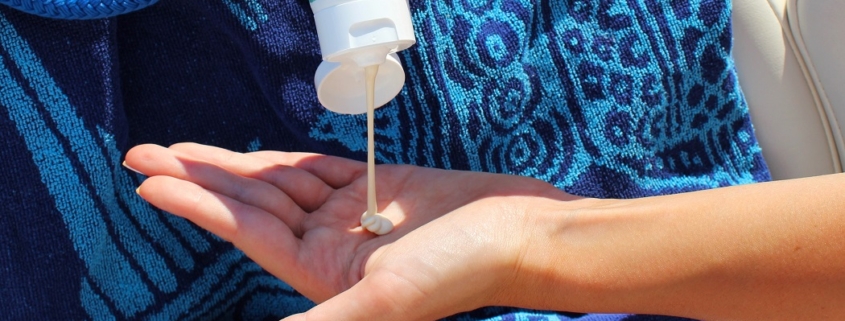Summer Sun Means You Need Protection
We are nearing the Memorial Day holiday, which many consider the official start of summer. Do your summer plans include a pool or beach and sunshine? Summer sun means you need protection. So how do you choose a sunscreen?
Time spent in the sunshine can be enjoyable and rejuvenating. Given that our skin uses sunlight to make vitamin D, that time is important for optimal health. After all, vitamin D isn’t made in skin covered with sunscreen. Did you know that vitamin D is a nutrient that acts as a hormone? It keeps inflammation in check, supports our immune system and bone health.
Yet, when it comes to sunshine, you can have too much of a good thing. Excess time in the sun can lead to sunburn, premature aging and even skin cancer. I’m sure you are aware of the recommendation to use sunscreen to protect from these risks.
With concerns about skin cancer from too much sun and vitamin D deficiency from too little sun, there are many opinions about the use of sunscreen. Let’s start by talking about sunscreen and then I will offer thoughts about when to use it.
Types of Sunscreens
There are two categories of sunscreen products – mineral and chemical. Mineral sunscreens rely on zinc oxide or titanium oxide to provide a physical barrier to sunlight, acting like a shield. Chemical sunscreens absorb UV light before it can cause damage to the skin. They act like a sponge rather than a barrier.
Mineral sunscreens are recognized by a common white residue from the zinc or titanium oxides. These are the only active ingredients that are recognized by the FDA as being safe and effective. Mineral sunscreens usually have a simpler ingredient list.
Chemical sunscreens are more popular thanks to huge advertising budgets and lack of white residue. Sadly, the chemicals used in this type of sunscreen are harmful and include many endocrine disruptors. If your goal is to reduce toxin exposure, a mineral sunscreen is a better choice for you.
Ingredient Concerns
Of particular concern in those ingredients is oxybenzone, which is allergenic, endocrine disrupting and absorbed through the skin in large amounts. It is of particular concern for children because of the risk of higher absorption and bioaccumulation. Other troublesome ingredients are Octinoxate and Homosalate (both endocrine disruptors), Octisalate, Octocrylene, and Butyloctyl Salicylate, which is not FDA approved.
Oxybenzone and Octinoxate also negatively impact coral reefs. If you are traveling to Hawaii, these ingredients are not allowed, and many other countries control what sunscreen you are allowed to use in their natural water habitats. If these ingredients harm coral reef life, why would you want to use it on yourself? For suggested sunscreens that are safer for you and the environment, visit Environmental Working Group’s Sunscreen review.
Other Ways to Protect Your Skin
- Wear long sleeves and pants
- Wear sunglasses to protect your eyes
- Don’t forget a wide-brimmed hat to protect face and neck
- Avoid sun during the harshest hours of 10 am to 3 pm
If you are covered and avoiding peak hours, you may not need sunscreen every day. One of my favorite ways to get Vitamin D from the sun, is to either spend time in tank top and shorts outside in the earlier morning or late afternoon. If you are out in the prime sun time, set a timer on your phone for 5-15 minutes of unprotected time. When the alarm sounds, stop and cover or slather up.
As you plan for time outside, keep in mind that summer sun means you need protection and there are many choices for sunscreen. Time spent outdoors provides so many benefits. Set yourself on the path to enjoy those benefits without drawbacks.







Leave a Reply
Want to join the discussion?Feel free to contribute!